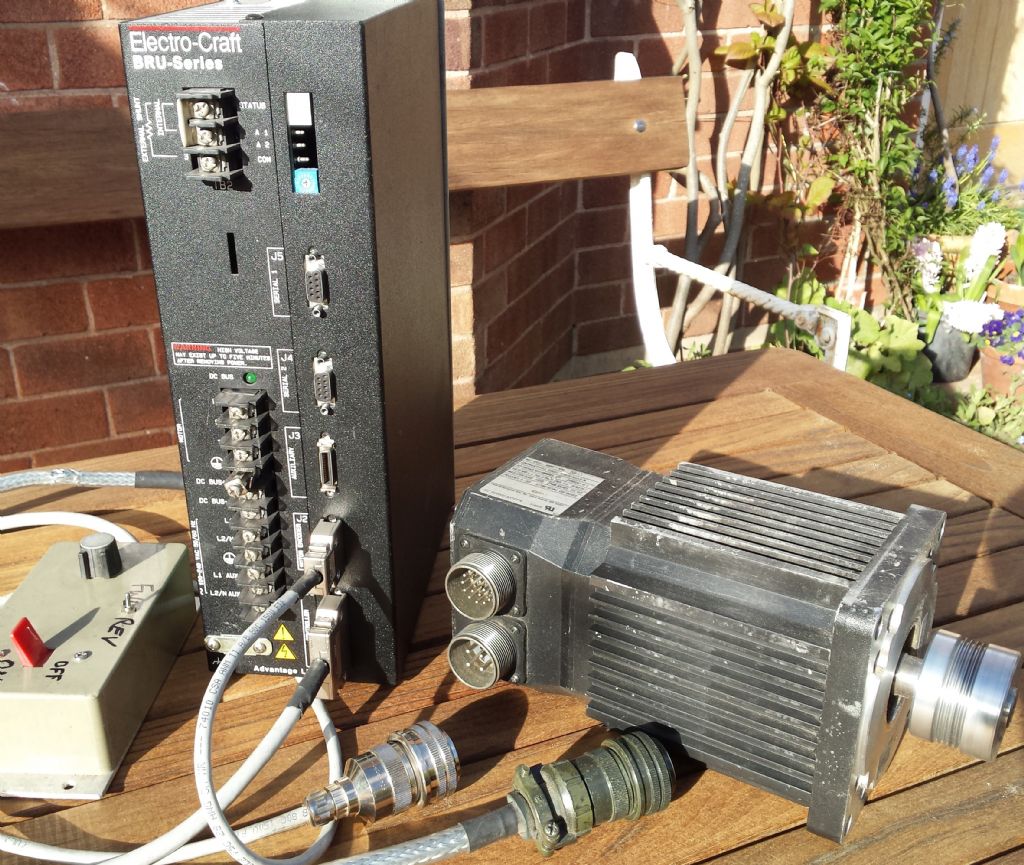Posted by Clive Foster on 03/04/2020 21:48:46:
Looks to be a bushless permanent magnet servo motor. If so you are stuffed without the drive box. It certainly won't run off a VFD.
Clive
Not sure I agree with that..
The VFD is not aware of how the magnetic field arises in the rotor. It can be induced by the stator, or from permanent magnets.
If the Stator induces the field in the rotor, the motor is termed an induction motor, with attendant rotor slip to enable said induction.
If the rotor field is created, for example, an external DC supply through the rotor winding, then the motor is a Synchronous motor, ie, with little or no slip. This field can also arise form a permanent magnet rotor.
Almosy any Brushless motor, servo motor or otherwise can be driven by a VFD, assuming it is a 3 phase device, as most are. The key is to match the VFD RMS output voltage to the motor, relative to motor rotation speed and current flowing. Almost any half decent VFD allows that to be set. The is one exception though – VFD's that operate on the Vector principle should not be used with permanent magnet rotors – the vector VFD relies on the back-EMF to assist in rotor position determination, relative to the rotating stator magnetic field. The back-EMF detected is different for an induction motor, with rotor slip, and a synchronous motor, with respect to rotor position.
So, I would say, if you have a VFD ( non-vector type), hook it up the the motor windings, set the VFD max output voltage to around 80 or so to start, set max current to 1amp, and try it. If it over-currents without starting, increase the current to maybe 2amps – don't go higher just yet…
If is spins, you can open the envelope up , but watch the currents! Since you had the motor running previously, you will know what is 'sounds' like when happy – listen for that sound!
BEFORE DOING ANY OF THIS !!—
Check that there is no short between any motor winding and the motor body.
Connect the motor body to the same ground as the VFD is..
Why I suggest this can work? – Well I have done this on a few RC brushless motors, a notable one being an 8KW peak, 1KW RMS outrunner – it is about 160mm diameter and 120mm deep, max applied voltage is 120V, and does 5000RPM at 120V AC 3phase. I use it as a drive motor on a wood cutting spindle table.
The VFD I used is a 2KW YASKAWA.
Joe
 Ian P.
Ian P.




